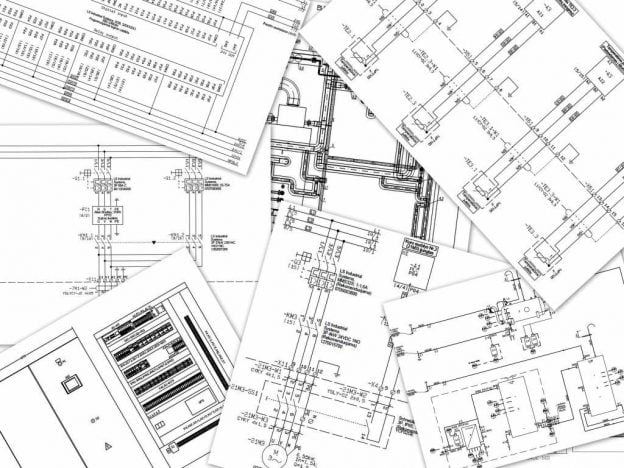Course Description
This course is intended for use by those new to using electrical drawings or those wishing to refresh their knowledge of the associated function and components that make up the electrical drawing system.
The purpose of this course is to provide an overview of drafting and drawings used in the electrical industry. Electrical drawing’s purpose is to transfer electrical information or requirements to one or several users so that productive work may be performed. This work may consist of such actions as estimating, planning, manufacturing, construction, commissioning, maintenance and troubleshooting.
There are several types of drawings depicting electrical circuits which are outlined in this course. The types of diagrams that will be reviewed include the:
- Operating Diagram
- Schematic or One Line Diagram
- Electrical Arrangement
- Elementary Wiring Diagram
- A.C. Elementary Wiring Diagram
- D.C. Elementary Wiring Diagram
- Connection Wiring Diagram
- Block Diagram
An electrical diagram could be a single page schematic, or a 200 page document. This course is intended to break it all down into small chunks that are easily understood.
Electrical diagrams may follow different standards depending on the country where they will be used. They may have different layouts depending on the company and the designer who is designing the drawing. They also may be drawn by different types of software, such as AUTOCAD. So when you see a wiring diagram for the first time, you can take a little time to analyze it and become familiar with its layout and symbols and recalling what you have learned in this course.
By end of this course, you’ll have a good understanding of how to read, understand and use any wiring diagram for your benefit. This course is intended to give you a quick overview and get you started into this two-dimensional world of electrical symbology.
Course Summary
- Course Introduction
- Schematic Diagrams: Detailed Explanations
- Block Diagrams: Detailed Explanations
- Component Symbols – Part #1
- Component Symbols – Part #2
- Logic Gates: : Detailed Explanations
- Download Materials (PDF)
Who Is This Course For
- Anyone who wants to learn drafting and electrical drawings from scratch
- Electrical Engineering Students
- Electrical Engineering Graduates
- Electrical Control Engineers
- Electricians
Requirements
- Passion to learn electrical drawings
- The basic electrical principles
Downloadable course materials
After purchasing the course, students can download the following materials:
- Engineering Symbology, Prints, And Drawings - Part #1 (PDF)
- Engineering Symbology, Prints, And Drawings - Part #2 (PDF)
- Typical Electrical Drawing Symbols And Conventions (PDF)
- Schematic Representation Of Power System Relaying (PDF)
- Electrical Theory, PLC Concepts and Basic Electronics (PDF)
About Instructor



